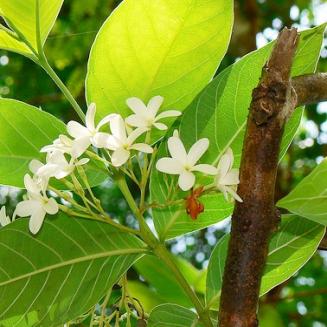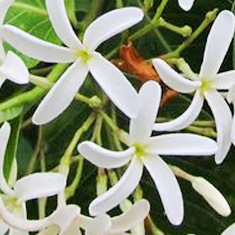
Code: HA
|
:
|
English names: Conessi bark, kurchi bark, bitter oleander, dysentery rose-bay, Tellicherry bark.
Description: A tree reaching about 10 m. in height or more. Bark pale-brown, lenticellate. Young twigs tomentose. Leaves opposite, oval, subsessile. Flowers white in axillary or terminal corymbiferous cyme. Follicles cylindrical in pairs, long, narrow, incurved. Seeds numerous, brownish, crowned with a tuft of long hairs at one end. All parts of the plant yield a milky juice.
Flowering period: April - May.
Distribution: Grows wild in the mountains and the midlands.
Parts used: The bark, collected in February and March. Removed from the stem, the bark is well washed, then dried in the sun or in ovens.
Chemical composition: The trunk bark contains alkaloids: conessine, nor-conessine, conessimine, isoconessimine, kurchine, conimine, conamine, conkurchine, holarrhine, holarrhenine and holarrhimine; gum, resins, tannin, triterpene alcohol, lupeol, b-sitosterol.
Therapeutic uses: The trunk bark possesses amoebicidal properties. It is effective against amoebiasis in a daily dose of 8 to 10 g of dried trunk bark, or 4 to 6 g of dried seeds in the form of powder, tincture or liquid extract The sum of the alkaloids and conessine are also used. A bath containing a decoction of bark or leaves cures scabies. An alcoholic maceration of pounded roots is also used topically against scabies.

